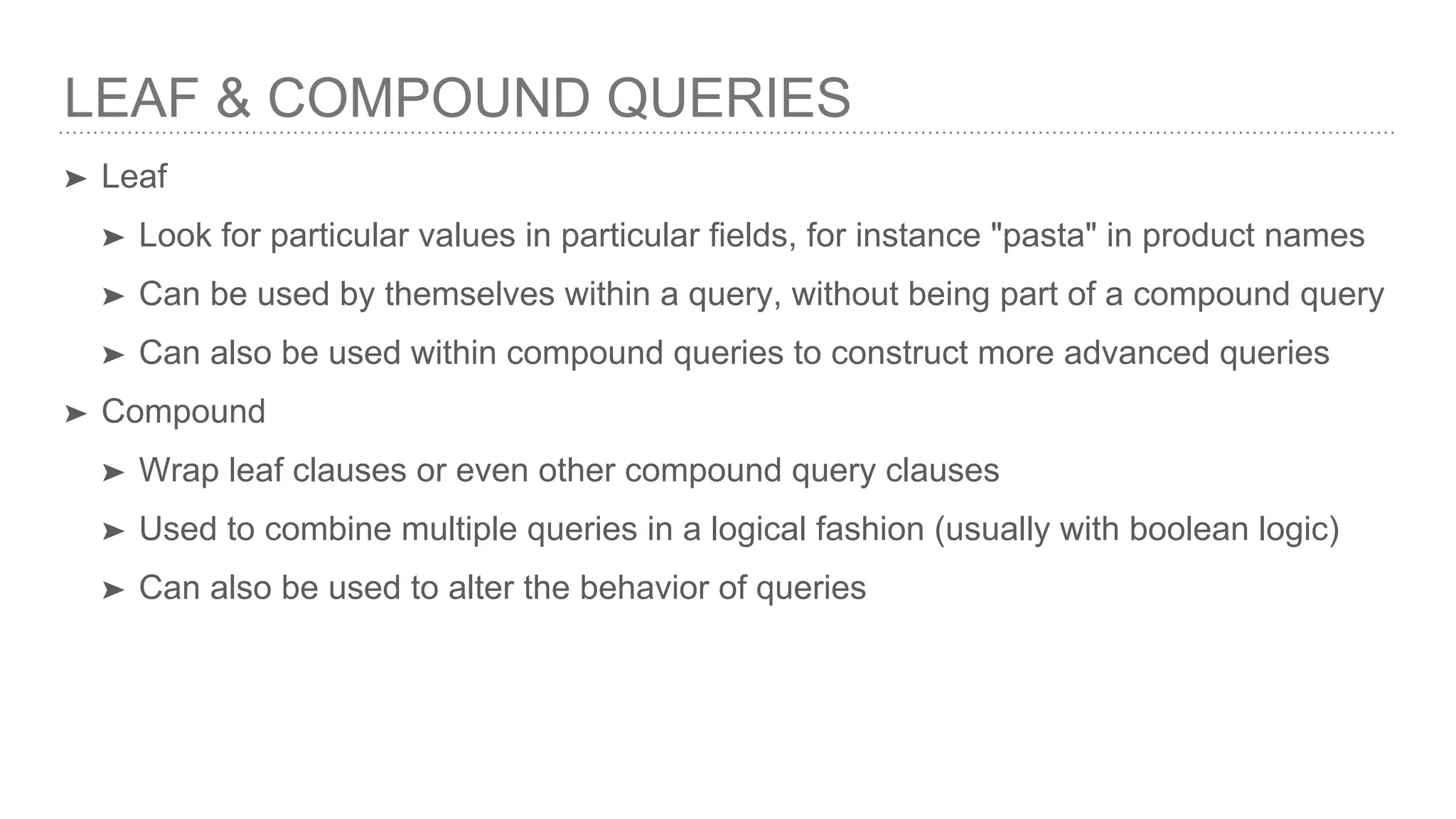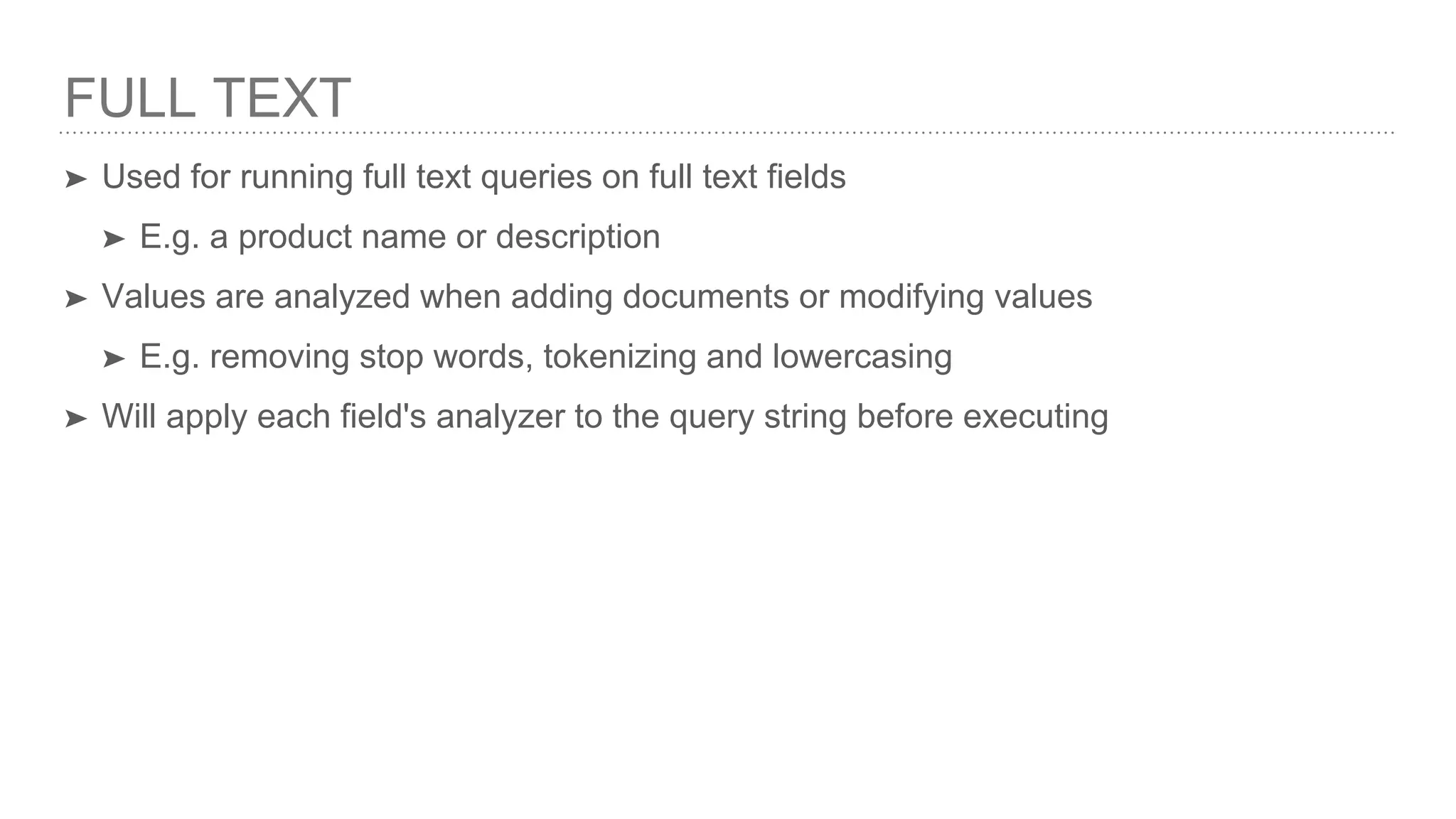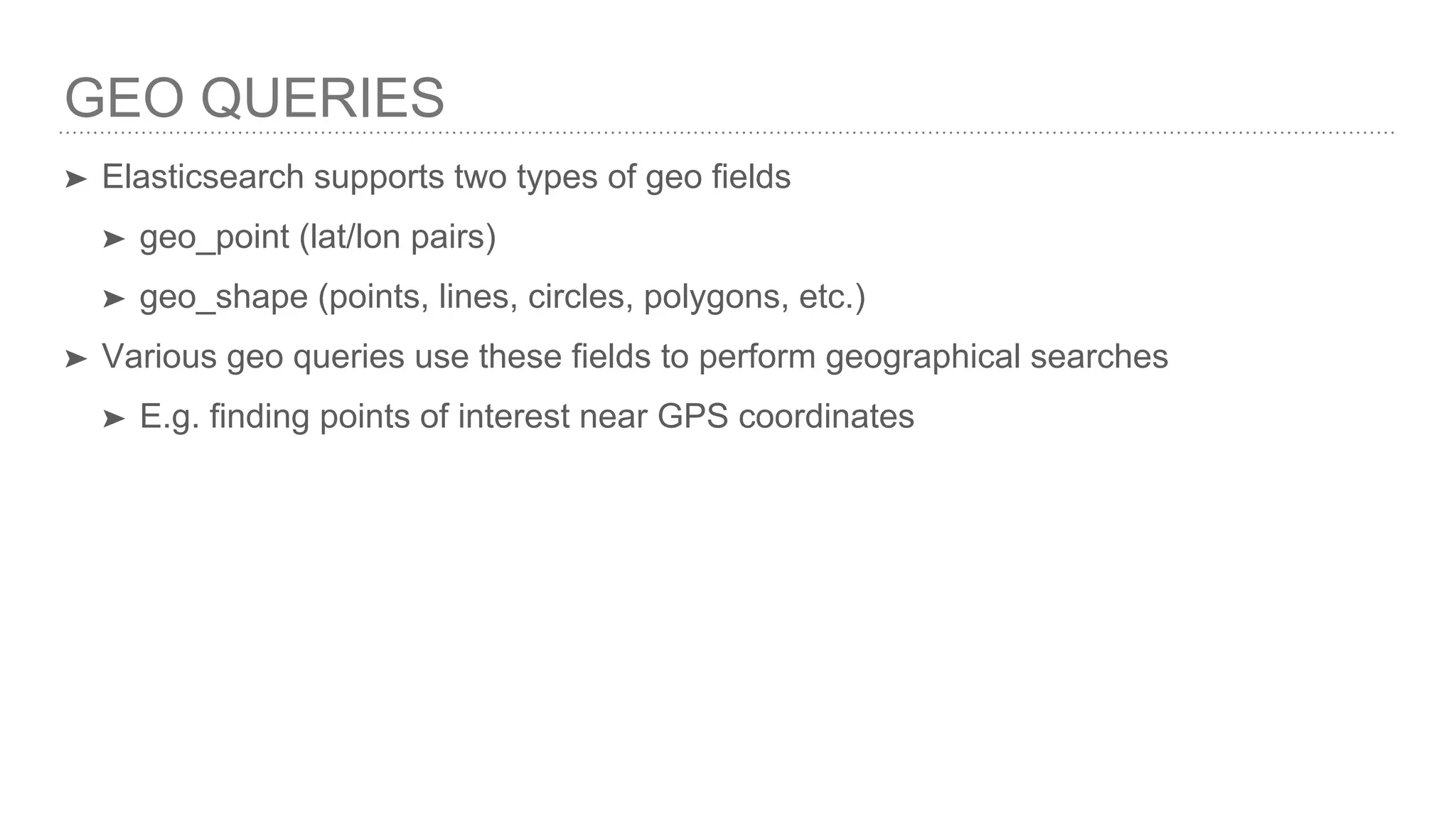The document provides an introduction to searching techniques in Elasticsearch, covering key concepts like relevancy, scoring, and various types of queries. It explains query string and query DSL methods, detailing how to construct leaf and compound queries for effective document ranking. Additionally, it discusses specialized query types such as full-text, term level, nested, and geo queries, highlighting their applications in a search context.












